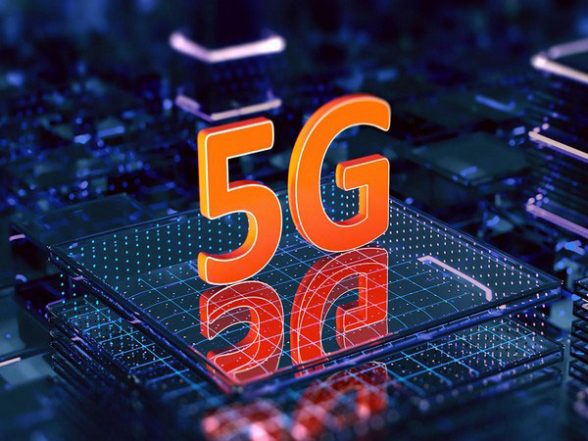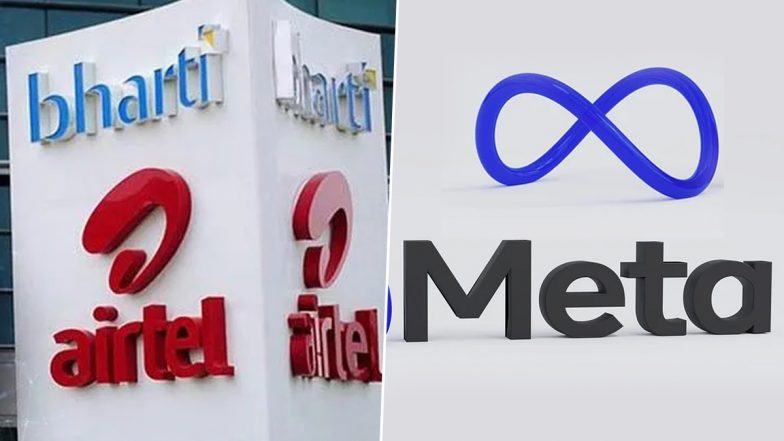New Delhi, December 27: The Fifth Generation or 5G telecom services are set to be rolled out in selected cities in India in 2022. The cities which are set to get the 5G telecom services in 2022 include Gurugram, Bangalore, Kolkata, Mumbai, Chandigarh, Delhi, Jamnagar, Ahmadabad, Chennai, Hyderabad, Lucknow, Pune, and Gandhinagar.
Leading telecom service providers Bharti Airtel, Reliance Jio and Vodafone Idea, have established 5G trials sites in these cities. “These Metros and big cities would be the first places for launch of 5G services in the country, next year,” the Department of Telecommunications (DoT) said on Monday. The fifth-generation is the latest upgrade in the long-term evolution (LTE) mobile broadband networks. 5G in India: DoT Nod to Telecom Service Providers for Conducting 5G Technology and Spectrum Trials.
While 4G was a great leap forward, allowing people to stream music and video on the go, 5G is designed to connect many more types of devices than smartphones and offers far higher speed and capacity. Apart from the leading telecom operators and smartphone manufacturers, the government is also involved actively to facilitate the rollout of 5G services. The Department of Telecom has roped in leading research institutions for development and testing of 5G technology.
Eight agencies – Indian Institute of Technology (IIT) Bombay, IIT Delhi, IIT Hyderabad, IIT Madras, IIT Kanpur, Indian Institute of Science (IISC) Bangalore, Society for Applied Microwave Electronics Engineering & Research (SAMEER) and Centre of Excellence in Wireless Technology (CEWiT) – are involved in the research project called ‘Indigenous 5G Test bed project’. The Indigenous 5G Test bed project started in 2018 and is set to be completed by December 31, 2021. The project has been funded by the Department of Telecom. The department has spent Rs224 crore on this project. DoT-funded Indigenous 5G Testbed Project in Final Stages; Completion Likely by Dec 31.
“Costing Rs 224 crore, the project is likely to be completed by December 31, 2021, paving the way for end-to-end testing of 5G User Equipments (UEs) and network equipment by 5G stakeholders developing 5G products/services/usecases, including indigenous start-ups, SMEs, Academia and Industry in the country,” the Department of Telecom said.
The indigenous 5G test bed, a visionary technology development project initiated in telecom space, will enable development, testing and proliferation of 5G technology system components, cross-sectoral use cases, besides setting up the foundation for the development of “6G Technology landscape” in the country, it added.
Earlier this month, Telecom Secretary K Rajaraman expressed hope that 5G test bed would be rolled out in early January. “We hope to roll out this 5G test bed in early January which will enable SMEs and other parts of industries to come and test their solution on a working platform,” Rajaraman said at India Mobile Congress on December 9. Test bed refers to creating a specific environment for testing the products or services. It includes hardware, software, operating system, and network configuration.
As the testing is in the final stage, allocation of the spectrum would be critical in deciding the fate of the commercial launch of 5G in the country. The Department of Telecom has allocated spectrum to Bharti Airtel, Reliance Jio, Vodafone Idea and MTNL for 5G trials. Ericsson, Nokia, Samsung and Mavenir also engaged in the trials.
In September 2021, the Department of Telecom (DoT) sent a reference to the Telecom Regulatory Authority of India (TRAI), seeking recommendations for the auction of spectrum identified for International Mobile Telecommunications (IMT)/ 5G with regard to a reserve price, band plan, block size, the quantum of spectrum to be auctioned and conditions of auctions in 526-698 MHZ,700 MHZ, 800 MHZ, 900 MHZ, 1800 MHZ, 2100 MHZ, 2300 MHZ, 2500 MHZ, 3300-3670 MHZ, and 24.25-28.5 GHZ bands for 5G public as well as private 5G networks, for meeting the spectrum requirements of captive 5G applications of the industry (Industry 4.0).
“Process of assignment of frequencies to TSPs would be initiated at the earliest possible,” DoT said. 5G mainly works in 3 bands, low, mid, and high-frequency spectrum. In the low band spectrum, the speed is limited to 100 Mbps (Megabits per second). The mid-band spectrum, on the other hand, offers higher speeds compared to the low band but has limitations in terms of coverage area and penetration of signals.
Internet speed in the high-band spectrum goes up to 20 Gbps (giga bits per second). The highest internet speed in 4G has been recorded at 1 Gbps. While 4G networks are mostly designed for phones, 5G networks is designed for much more flexible use, replacing the need for many special-purpose networks. They can even function as many separate networks – all at the same time.
(This is an unedited and auto-generated story from Syndicated News feed, Morning Tidings Staff may not have modified or edited the content body)



